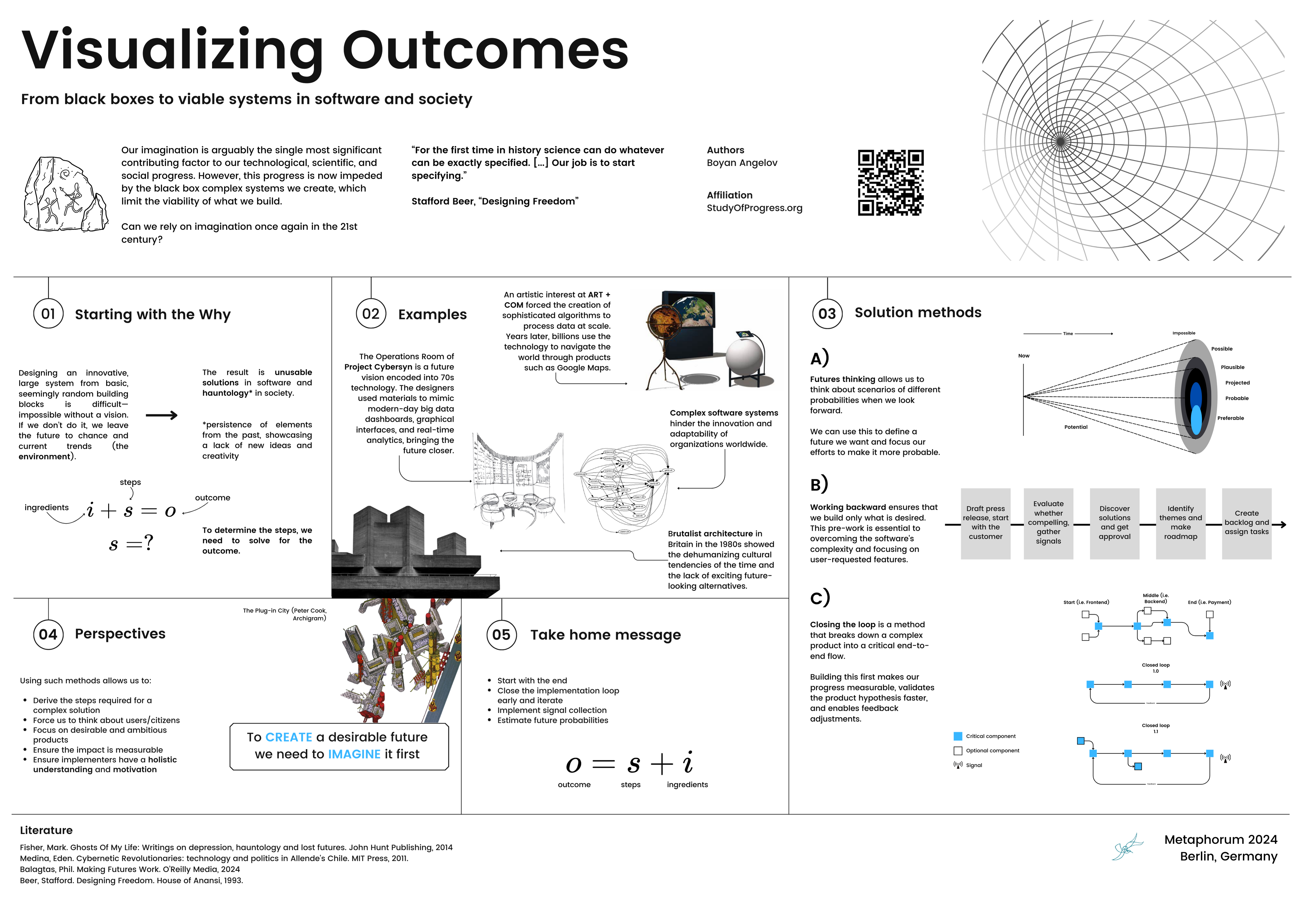Visualizing Outcomes: From black boxes to viable systems in software and society

Abstract
With time, even the simplest becomes complex; clear designs become black boxes, challenging not only to steer but even to understand. The seeds of complexity are sown already in the early iterations of a system and show up much later, contributing to obscuring our understanding. I will draw parallels between Project Cybersyn and recent digital products and social systems in terms of achieving viability. Cybernetic principles were as successful in “future making” back then as more modern methods, such as Amazon’s “building backward,” are now. By envisioning and assembling a seemingly complete system early on in the creative process, we ensure that the core of its functionality continues to adhere to our ideas even as it grows more complex with scale. In the building backward methodology, we can frame Cybersyn’s Operations room as the “press release” stage of a future product, with all core features fundamentally functional from the get-go. The “completeness” of the product allowed designers to gather valuable feedback from the start, ensuring there were no show-stopping issues early on, a genuine “minimal viable product” before its time. With metrics in place, we can confidently adjust parameters (such as adding new features, data, or changing resources available for development) as the system becomes more complex. This way, we inspire the designers by letting them see an actual product and gather valuable signals for further development. We avoid swinging between oversimplification or overengineering, typical of modern digital products or social systems.